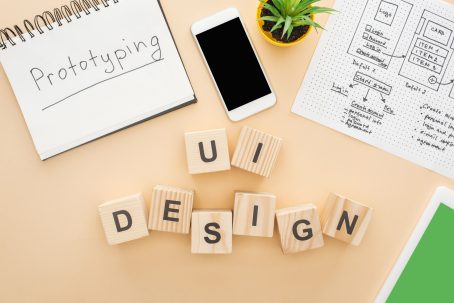Master UI Optimization: Techniques and Tips for Peak Performance

Category:Web Design
Publish Date: 2024-02-04 16:45:26
In the fast world of digital marketing, the user interface (UI) emerges as the linchpin, a portal through which captivating user experiences are crafted and delivered. As the visionary founder of Ramikar, a prominent figure in the dynamic realms of SEO and digital marketing services, it is not just a pursuit but an imperative to unravel the intricacies of UI optimization techniques. This expansive guide, akin to a compass, is set to explore the uncharted territories of advanced strategies, shedding light on UI performance optimization techniques and presenting invaluable UI optimization tips. If you wish, you can use our affordable website design services in Vancouver.
This Table is a reflection of what you will going to learn:



| Technique | Description | Specification |
| Responsive Design Mastery | Orchestrate a seamless user experience across various devices through responsive design, enhancing accessibility and positively impacting SEO rankings. | – Fluid grid layouts for adaptive designs. – Flexible images that dynamically scale. – Media queries for responsive adjustments based on device characteristics. |
| Image and Media Optimization | Strike a balance between high-quality visuals and loading speed by compressing images, lazy loading media, and leveraging next-gen formats (WebP or AVIF) for superior user engagement. | – Image compression tools to reduce file sizes. – Lazy loading implementation for optimized initial load times. – Use of next-gen formats such as WebP or AVIF for enhanced quality and speed. |
| Minification of CSS and JS | Trim the fat from your codebase with CSS and JavaScript minification, accelerating page load times and contributing to a cleaner, more efficient UI. | – Minification tools like UglifyJS and CSSNano to remove unnecessary characters and spaces. |
| Browser Caching Implementation | Capitalize on browser caching to store static files locally, reducing server load and boosting load times for returning users. | – Configuration of cache-control headers for efficient storage and retrieval. – Setting appropriate expiration times for effective caching. |
| Content Delivery Network (CDN) Integration | Extend your digital reach with a well-implemented CDN, distributing content strategically across servers worldwide for swift access, aligning with global SEO services. | – Selection of a reliable CDN provider for an extensive server network. – Effective distribution of assets across servers for optimal content delivery. |
| User Feedback Integration | Continuously refine your UI by soliciting and incorporating user feedback, aligning with a user-centric approach and Ramikar’s commitment to personalized digital marketing strategies. | – Implementation of user feedback mechanisms, such as surveys and feedback forms. – Agile incorporation of insights into UI updates for continuous improvement. |
| Progressive Web App (PWA) Implementation | Elevate your website’s functionality with PWA principles, engaging users through seamless offline experiences and app-like interactions. | – Service worker implementation for offline functionality. – Enhanced web app manifest to define app-like characteristics and interactions. |
| Typography and Readability Enhancement | Prioritize legibility with carefully chosen fonts, font sizes, and color schemes to ensure accessible and engaging content, aligning with Ramikar’s commitment to clarity. | – Utilization of font pairing tools for harmonious combinations. – Adherence to accessibility standards for inclusive and comprehensible content. |
| Augmented Reality (AR) Integration | Embrace emerging technologies by integrating AR elements into the UI, creating immersive interfaces that seamlessly blend the digital and physical worlds. | – Integration of AR development kits and platforms. – Crafting interfaces that seamlessly blend digital and physical elements for immersive experiences. |
| Voice Interfaces Integration | Craft UIs that respond not only to touch and clicks but also engage in seamless conversations with users through voice interfaces, anticipating the future of digital interactions. | – Integration of natural language processing and voice recognition technologies. – Crafting intuitive voice-based commands and responses for a fluid conversational experience. |
| Adaptive UIs | Anticipate user intent and dynamically adapt UI elements based on individual preferences, crafting personalized and anticipatory digital experiences for users. | – Implementation of machine learning algorithms for analysis of user behavior. – Crafting adaptive UIs that evolve with user interactions for a tailor-made experience. |
| Gesture Controls | Incorporate gesture recognition technologies into UIs, enabling users to interact with digital elements through natural hand movements, creating a symphony of motion in user interactions. | – Integration of gesture recognition technologies for intuitive hand movements. – Crafting interfaces that respond seamlessly to gestures, enhancing user engagement through motion. |
| Biometric Integration | Enhance security and personalize experiences by integrating biometric authentication methods such as facial recognition, fingerprint scanning, and voice biometrics into UIs. | – Integration of biometric authentication methods for enhanced security. – Crafting interfaces that personalize experiences based on individual biometric data for a secure and tailored interaction. |
The Essence of UI Optimization
Before setting sail on the voyage of UI optimization techniques, it’s prudent to pause and contemplate the fundamental essence of this transformative endeavor. At its core, UI optimization is an alchemical fusion, a delicate balance struck between aesthetic allure and functional prowess. Picture it as the cornerstone of a digital citadel – a website. An optimized UI is the vigilant guardian that ensures seamless navigation, akin to the gentle flow of a river, reducing bounce rates, and elevating user satisfaction to a zenith. These are not mere metrics; they are the heartbeat of the digital marketing realm. In a world where attention spans flicker like candle flames, the essence of UI optimization lies in creating an interface that captivates the audience visually while seamlessly guiding them through the digital landscape. The nexus of form and function, when harnessed adeptly, becomes a powerful catalyst for online success. Aesthetic Allure: The visual appeal of a website is its armor in the digital battlefield. An optimized UI crafts an aesthetic symphony that entices users, beckoning them to explore further. At Ramikar, we understand that the first impression is more than a cliché; it’s a conversion opportunity. We meticulously weave visual elements into the fabric of UI, ensuring they harmonize with brand identity and convey a story that resonates. Functional Efficiency: Behind the curtain of aesthetic grandeur, the machinery of functional efficiency hums. An optimized UI is not just a pretty facade; it’s an intuitive guide, anticipating user needs and facilitating seamless interactions. It is the silent conductor orchestrating an effortless symphony of clicks, scrolls, and engagements. Ramikar’s commitment extends beyond appearances – we engineer interfaces that not only delight the eye but also empower the user. We suggest you read this article as well: Common mistakes in web design [elementor-template id=”19601″]Crucial UI Optimization Techniques
- Responsive Design Mastery
- Image and Media Optimization
- Minification of CSS and JavaScript
- Browser Caching Implementation
- Content Delivery Network (CDN) Integration

The Nexus of UI Optimization and SEO
As we venture through the intricate landscape of UI optimization techniques, it becomes imperative to recognize and celebrate the symbiotic relationship between UI and SEO. The algorithms wielded by search engines, particularly Google, are evolving, increasingly prioritizing metrics associated with user experience. In this dynamic digital environment, a finely tuned UI emerges as an indispensable ally in the pursuit of higher search engine rankings. Google’s commitment to providing users with the best possible experience is mirrored in its algorithms, which now assess and rank websites based on user-centric criteria. This shift has elevated UI optimization to a paramount position in the digital strategy playbook. At Ramikar, we stand at the forefront, uniquely poised to leverage this profound connection between UI optimization and SEO for the benefit of our clients. Our SEO and digital marketing services are not just about ranking higher on search engine results pages; they are about crafting a digital experience that resonates with users. By understanding and implementing UI optimization techniques that align with Google’s evolving algorithms, we ensure that our clients not only reach the top but stay there by offering an unparalleled user experience. We also provide specialized SEO services. For more information, visit the Search Engine Optimization in Vancouver.UI Optimization Tips
- User Feedback Integration
- Progressive Web App (PWA) Implementation
- Typography and Readability Enhancement

UI Optimization for the Future
As we set our gaze on the horizon, the realm of UI optimization unfolds as an ever-evolving frontier, poised to be shaped by cutting-edge technologies and transformative innovations. The future of UI optimization is not a static destination; it’s a dynamic journey into uncharted territories where emerging technologies like augmented reality (AR) and voice interfaces will redefine the very fabric of user interactions.- Augmented Reality (AR)
- Voice Interfaces
- Adaptive UIs
- Gesture Controls
- Biometric Integration
Last words
In the ever-evolving landscape of digital marketing, UI optimization stands as a formidable force. This exploration of advanced UI optimization techniques serves as a testament to Ramikar’s commitment to delivering unparalleled SEO and digital marketing services. As the digital horizon continues to expand, the fusion of cutting-edge UI optimization and innovative SEO strategies will undoubtedly propel your online presence to new heights. [elementor-template id=”19628″]FAQs
- Why is responsive design essential for UI optimization?
- How does user feedback contribute to UI optimization?
- What is the significance of integrating augmented reality (AR) into the UI?
- Why is voice interface integration crucial for future UIs?
- How does biometric integration enhance UI optimization?
Recent Articles:

Video Marketing Canada: Best Strategies for 2025
7 months ago
5 min 25 sec read

Photography Services Canada: For Web & Social Media Use
7 months ago
5 min 2 sec read

Logo Design Canada: Create a Logo That Truly Stands Out
7 months ago
4 min 38 sec read
Let us help !
Related Posts
Comments
0
0
votes
Article Rating
Subscribe
Login
0 Comments
Oldest
Newest
Most Voted
Inline Feedbacks
View all comments






